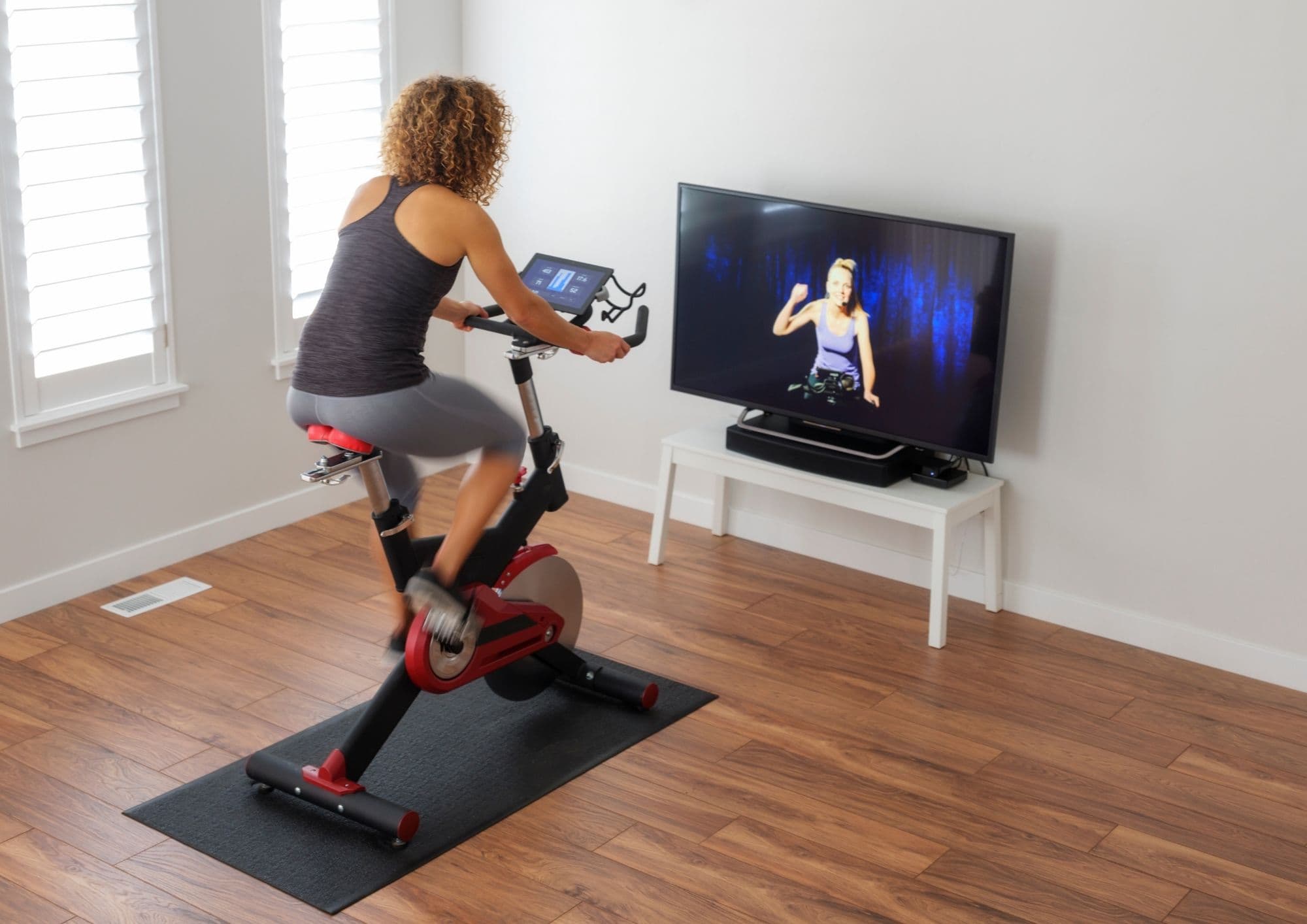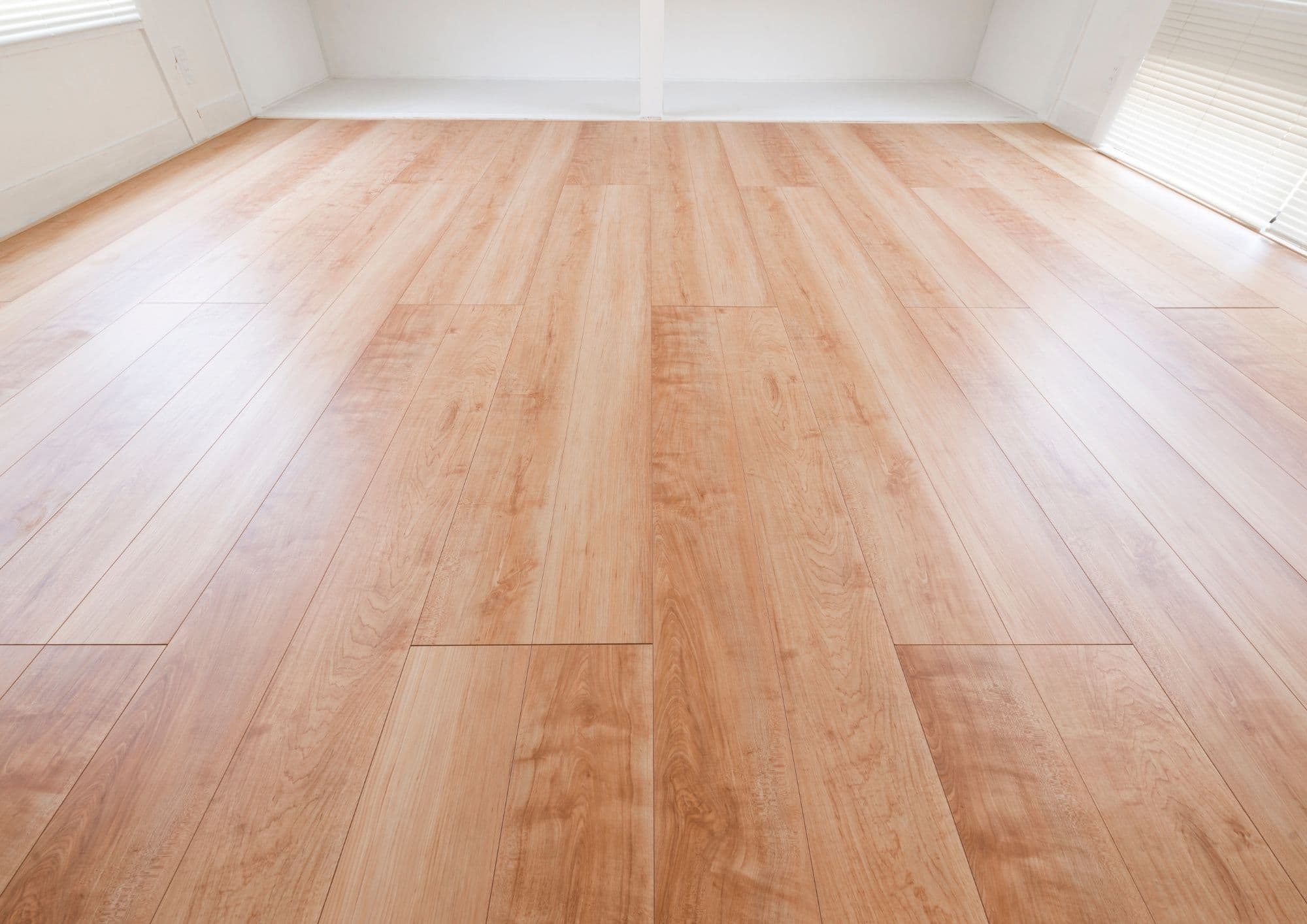The presence of an exercise bike at home makes maintaining a fit, healthy body a convenience since even with lockdowns and inclement weather, you can still do your bike routines in the comfort of your home. However, fitness equipment can be pretty heavy, and improper handling and use of these devices can wreak your flooring. To prevent this, do you need a mat for exercise bike?
The use of exercise bike mats offers benefits that will not only maintain your flooring’s integrity, it will also assure that your exercise bike will remain in place during workouts. There are other advantages that exercise bike mats offer, and the rest we will discuss in full in this post, so read on!
What Are The Benefits Of Using Equipment Mats?

Need more persuasion on why do you have to invest in a quality fitness equipment mat? Here are the reasons why purchasing one is worth it.
1. Protect The Flooring
The exercise bike mat serves to protect your home’s floor from damage. Floor damage can be pretty common since furniture like tables, couches, and chairs can do a number on your flooring if they were budged repeatedly during use.
If the stationary bike budges or moves during your workouts, it can scuff and cause marks on the floor. These will add up over time and result in flooring that is not exactly a pleasant sight.
In addition, all that sweating during rigorous workouts can also stain the floor over time if not taken care of immediately. Protecting the floor is also crucial especially if you are currently renting a flat or home. Talking about the damage your equipment has done to your landlord’s property may not be that pleasant either.
2. Easy To Clean
Now, if you want your floor to remain spick and span, you have to look for a quality exercise bike mat. The bike mat maintains the cleanliness of your floor.
If you have carpeted floors underneath your spin bike, your perspiration drops straight to the carpeting, and all that accumulated sweat, along with dirt, dust, and debris, results in a smelly residue buildup that will require deep cleaning to remove completely.
Using an exercise mat under an exercise bike helps cleaning up after the workout an easier job to perform. The rubber mat is designed to be cleaned without breaking a sweat. You can simply wiped clean with a damp cloth or rag.
3. Stability
When somebody asks you, ‘do you need a mat for exercise bike?’ Tell them that you want one because it helps make the indoor bike stable while you work out. If your flooring is already uneven, the mat will serve to cover up dents, grooves, or other existing imperfections that will cause the bike to shake and oscillate during usage.
While there are lots of exercise bikes that already include adjusters to correct floor imperfections, fitness equipment mats can still create a smooth surface that will improve your bike’s stability.
4. Provides Grip
One of the best things about using a home gym mat is that it gives the bike enough grip so it will remain in place during exercise. There’s no need to worry about the unit slipping and sliding particularly during intense workouts. A mat for fitness equipment is also crucial on flooring made up of slippery surfaces like tiles.
5. Minimises Noise
Exercise bikes produce noise and vibrations during use, and if you live in an upstairs flat or condominium, using the bike when your neighbours are resting, sleeping, or working from home can be a problem. An exercise bike mat can help reduce the noise that your bike makes during workouts. Why? Because it helps buffer and muffle the noise and vibrations that the unit generates when it’s being used.
Exercise Bike Mats For Different Flooring Types
We have discussed the reasons why fitness equipment mats benefit your exercise bike. Now, it’s time to discuss different flooring types and the kind of exercise bike mat that suits each.
1. Hardwood
Sweat is one of those bad elements that can wreak havoc on your hardwood floor. Exercise bikes that are not stable can slip around, causing scuffs and marks. To maintain a hardwood floor’s integrity, choose quality vinyl mats since rubber mats contain chemicals that react with specific hardwood varnish coatings and cause damage to them.
2. Tiles

Tile floors are one of the easiest to maintain. However, due to their ultra-smooth, shiny surfaces, they’re slippery and this can cause exercise bikes to budge around during workouts.
Tile flooring is also vulnerable to cracking when heavy bikes are manned by larger users. Tile floors cannot take in noise and vibrations as well so it magnifies the din that exercise bikes make during use. For tile flooring, an exercise bike mat that’s made from first-rate rubber material is recommended to reduce noise especially if you are located in an upstairs apartment.
3. Vinyl
Like tile floors, vinyl is also a snap to clean and maintain. It gives fitness equipment sufficient grip to prevent the unit from sliding around. It can absorb noise and vibrations fairly well. However, vinyl flooring is susceptible to puncturing and tearing so using a rubber exercise bike mat over it can help prevent damage.
Can You Skip The Exercise Bike Mat For Carpet Flooring?
But what about carpeted floors? Do you need a mat for an exercise bike that’s positioned on top of the carpeting? Since neatness and cleanliness are an issue with carpets and exercise equipment, then yes, you need a fitness equipment mat over your carpeted floor. And yes, there is a suitable mat material for it.
As mentioned previously, bike exercise routines will no doubt make you sweat. If you want to lose weight, you need to double the effort and with that effort are opportunities to sweat a lot. Thus, during intense workouts, the sweat drops not only on your bike but on the carpeting as well.
Along with the dust, dirt and grime that’s already on the carpet make for a surface that is prone to mould and bacterial growth. The sweat buildup will not only make for a dirty and messy carpet, but it will also make it foul-smelling.
Avoid filthy, stinky carpeting in your home gym by using high-quality rubber or vinyl mats. These materials are ideal for carpeted floors since both help compress the carpeting under them. Choose mats with a sufficient thickness – vinyl and rubber mats with 1/4-inch thickness are enough to compress carpets, absorb noise, and provide stability for indoor bikes.
Factors To Consider When Choosing Quality Exercise Bike Mats
If your question ‘do you need a mat for exercise bike?’ has been answered, then it’s time to purchase one. Get exercise bike mats that are worth your money by remembering these factors.
1. Type Of Flooring

We have discussed earlier the different flooring types and the kind of fitness equipment mat that suits each type. Refer to that part of the article to get an idea of suitable bike mats for your floor at home.
2. Size
The size of the mat must be capable of accommodating the indoor bike. It must have some allowance so you can set the bike up properly when straddling or dismounting the bike.
3. Material
There is a suitable fitness equipment mat for every flooring type available. Vinyl mats are great for hardwood and carpeted floors while rubber mats are excellent for tile and vinyl.
4. Thickness
The thickness of the mat will depend on the type of flooring that your space has. For example, thicker rubber and vinyl mats are ideal for carpeted floors. On a related note, thinner ones are ideal if you want to put the mat away after workouts.
5. Smell
Rubber mats require a cleanup now and then because they develop an odour due to bacterial growth caused by sweat and dirt. If your nose is sensitive to odour, pick a fitness equipment mat that is crafted with PVC materials.
Conclusion
Hopefully, our answers to today’s question, ‘do you need a mat for exercise bike’ has provided you with all the details you need to convince you to purchase a high-quality fitness equipment mat. Exercise bike mats have their advantages, and those benefits will not only make you focus on your workouts better, but they will also maintain a clean, uniform flooring, and keep your routines safe.
Related Questions
1. What is the average weight limit for exercise bikes?
Most standard exercise bikes have a limit of 140-160 kilograms. In addition, exercise bikes come in different types, and those types vary as well when it comes to their weight limits.
2. What is the difference between a spin bike and an air bike?
Spin bikes and air bikes differ in many aspects. For example, air bikes work out several muscle groups at once, and require users to sit upright thus they are ideal for weight loss and high-intensity training. Spin bikes, meanwhile, only work out the legs and have a low impact on the joints so it’s suitable for elderly users and maintaining your current weight.